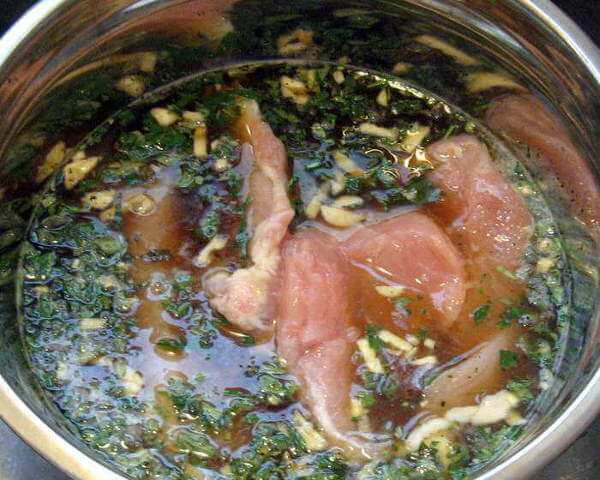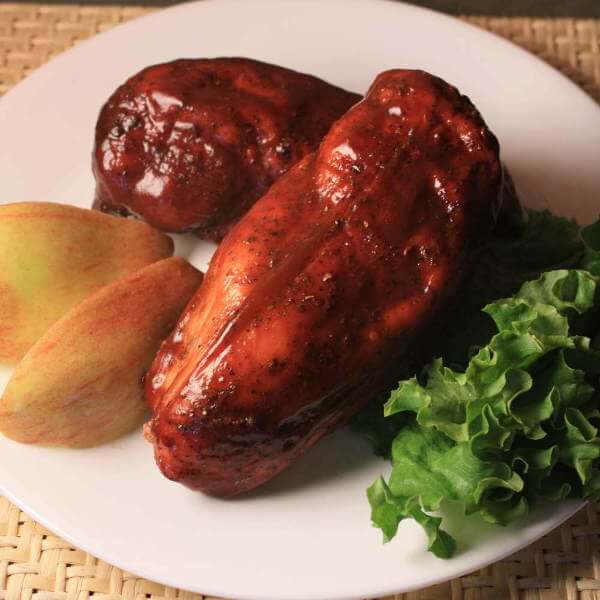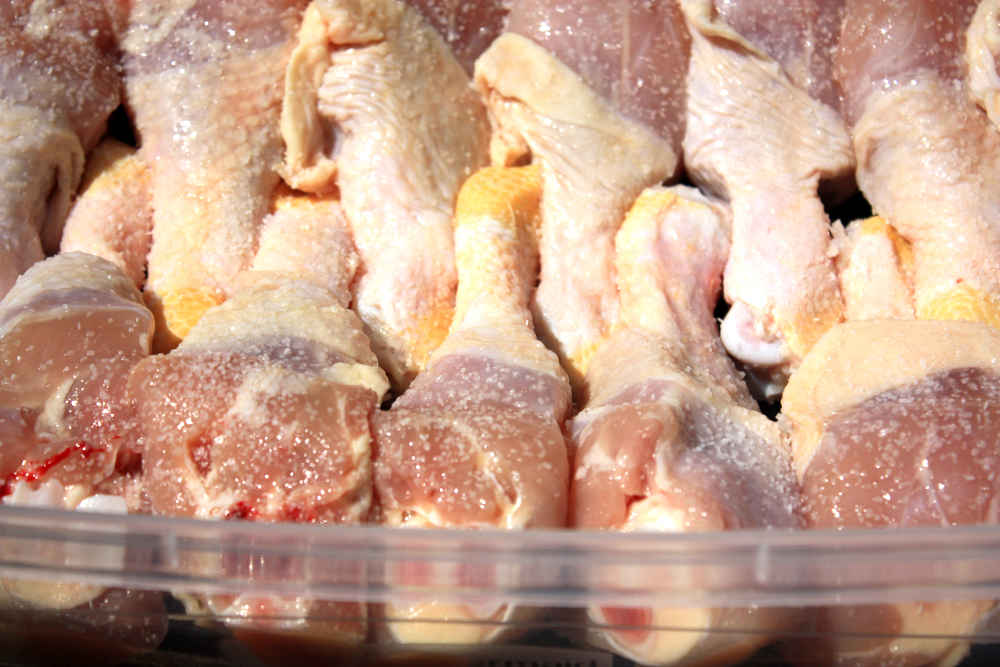How To Brine Chicken and Improve Flavor and Texture
Learn how to brine chicken and you will greatly improve its flavor, texture and moistness. This single step makes a big difference in the quality of your smoked and grilled chicken.
The salt and sugar in brine make changes to protein that improves its texture and enhances its ability to retain moisture. And that translates into better tasting chicken come dinner time!
 Garlic and Scallions Add Flavor To This Chicken Brine
Garlic and Scallions Add Flavor To This Chicken BrineHow Brining Makes Changes For The Better in Chicken and Other Foods
When chicken or other meat is put into a brine solution, a two-way transfer begins. Juices from the protein are pulled out into the brine, while the brine (along with any added sugar and flavorings) is pulled in. The end goal is to equalize the level of salt between brine and flesh.
As that's happening, other changes occur. The salt changes the character of the proteins in the meat, breaking them down and loosening their grip on each other.
In a way, it causes them to somewhat gel, and makes it harder for moisture to escape when the chicken is cooked. Sugars that are absorbed into the flesh hold on to water, which helps keep the meat even more moist when cooked.
How To Make An Effective Chicken Brine
Most brine recipes are pretty simple - just add the ingredients to cold water, stir until dissolved, and add the meat. But if you want to kick up the flavor a notch or two, you can simmer some of the ingredients first.
By doing this, the brine will give your smoked chicken a much richer flavor. Adding this step to making brine takes more time, but it definitely makes a difference.
How to Brine Chicken
 Brining a Small, Whole Chicken In a Food Storage Bag
Brining a Small, Whole Chicken In a Food Storage BagFirst, let's start with a basic poultry brine recipe:
- 1 gallon cold water
- 1 cup kosher salt
- 1/2 cup sugar
Bring 1/2 gallon of the water, the salt and sugar to boil, stirring until both are completely dissolved. Remove from heat, add flavorings, cover and allow to cool completely.
Add the remaining 1/2 gallon of water. Refrigerate to below 40 degrees Fahrenheit before adding chicken.
You can cut the recipe in half, or double it as needed, depending on how much chicken you'll be brining. Make enough so the chicken is completely covered in the brining container. If you brine in sealable plastic bag, you'll need less brine than if brining in a bowl.
To keep the chicken submerged, place a heavy plate, or a flat-bottomed bowl filled with some water over the chicken in the brine container.
Keep the brine and chicken COLD during brining, between 36-40 degrees Fahrenheit. If there's room, place the brining chicken in the fridge. If not, brine in an insulated cooler, and place a sealed bag of ice in the brine with the chicken.
Don't put loose ice in the brine...when it melts, the brine will be diluted and it won't do its job.
Chicken Brining Time: How Long to Brine
 Smoked Chicken Breasts Are Better When Brined!
Smoked Chicken Breasts Are Better When Brined!Use the brining times for chicken listed below as a guide. Adjust within those times to achieve more or less of a salty flavor.
- Whole Chicken: 4 to 8 hours
- Half Chicken: 3 to 6 hours
- Bone-in, Skin-on Breasts: 1 to 2 hours
- Boneless Skinless Breasts: 30 to 60 minutes
- Legs, Thighs, Skin-on: 45 to 90 minutes
- Legs, Thighs, Skinless: 30 to 45 minutes
Always brine in a non-reactive container. Glass, porcelain, crockery, plastic and stainless steel are all OK. Aluminum, copper and wood are not.
After brining, rinse the chicken well in cold, running water. Pat dry with a clean towel.
Now that the chicken is brined, it's ready to be seasoned with your favorite dry rub and smoked or grilled. Brined chicken usually takes less time to cook, which is another benefit of brining.
If you haven't brined chicken before, you'll definitely notice an improvement in both flavor and texture.
Try Dry Brining Your Chicken
Dry brining is the easiest way to get that salt into the chicken. Measure out about one-half teaspoon of salt per pound of chicken. Sprinkle it evenly onto the surface, and place the salted pieces or whole bird into a covered container.
If you like a more pronounced salt flavor, bump the amount up to three-quarters teaspoon per pound.
Alternatively, you can stuff the chicken into a food storage bag after salting. I prefer this method.
Either way, place the chicken in the refrigerator and turn it a couple times as it's being brined.
 Dry Brining Chicken Drumsticks
Dry Brining Chicken DrumsticksDry Brining Times for Chicken
When dry brining chicken, the time required is pretty much the same as for wet brined chicken. However it's unnecessary to limit the total brining time.
I often leave the dry salted chicken in the fridge overnight, at which time the salt is completely absorbed.
- Whole Chicken: 4 hours minimum
- Half Chicken: 3 hours minimum
- Bone-in, Skin-on Breasts: 1 hour minimum
- Boneless Skinless Breasts: 30 minutes minimum
- Legs, Thighs, Skin-on: 45 minutes minimum
- Legs, Thighs, Skinless: 30 minutes minimum
Give dry brining a try next time. I think you'll appreciate its simplicity.
- You Are Here: Home >
- Tips >
- Brining Chicken

